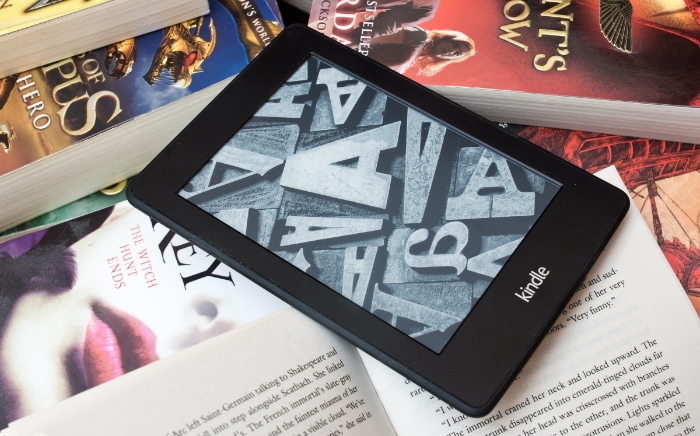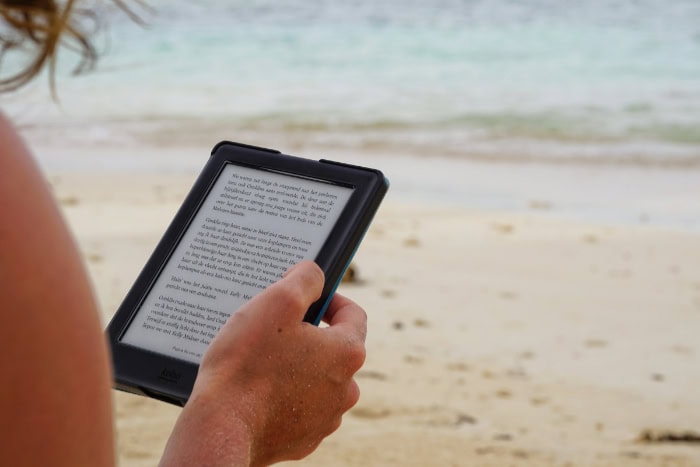Kindle vs. Physical Books: A Reader's Dilemma

The satisfaction of turning a physical page now competes with the convenience of an entire library in your pocket. For many, this is not just a matter of old habits versus new tech; it's a practical calculation made with every new title.
Can a backlit screen really offer the same comfort as paper under a reading lamp? Will digital notes ever replace the spatial memory of a dog-eared corner?
Reading Experience and Learning
The way a book feels in your hands and how well you absorb its contents are central to the reading process. Factors like comprehension, the physical memory of a story’s layout, and visual comfort in different settings can define your experience.
How print and digital formats affect deep reading and narrative understanding is a frequent point of comparison for those trying to choose between them.
Comprehension and Retention
For general understanding, both physical books and e-readers deliver information effectively. The differences appear in more specific cognitive tasks.
Readers often find it easier to recall the chronological order of events and the location of information within a physical book. A print format seems to help the brain create a mental map of the text, making it simpler to remember that a certain detail was on a left-hand page near the beginning.
This effect is most noticeable when reading long or complex material where a solid sense of structure aids recall.
Tactile Immersion and Sense of Progress
A physical book offers a unique sensory engagement that a digital device cannot replicate. The simple act of turning a page, the shifting weight of the book from the right hand to the left, and the visual thickness of the pages already read all contribute to a tangible sense of progress.
These physical landmarks help orient the reader within the narrative and can strengthen memory of the content. In contrast, the digital reading experience is more uniform, where progress is measured by a percentage bar rather than a physical change.
Eye Comfort and Lighting
E-ink screens are designed to mimic the appearance of printed paper, which helps reduce the eye strain associated with standard backlit screens on tablets and phones. Many e-readers also include a front-light, which illuminates the surface of the display from the edges, allowing for comfortable reading in low-light conditions without shining directly into your eyes.
Physical books, on the other hand, are highly readable in bright sunlight where many electronic screens suffer from glare. Their readability depends entirely on ambient light, which can feel more natural but requires an external lamp for reading in the dark.
Portability and Daily Convenience

Practical considerations often determine which reading format best fits a person's lifestyle. The ease of carrying books, the speed of acquiring new titles, and the way each option integrates into routines like commuting or traveling are important factors.
How a format supports frictionless reading while managing physical space at home can make one choice much more appealing than the other for everyday use.
A Library in Your Pocket
An e-reader's most significant advantage is its ability to hold a massive collection of books on a single, slim device. For travelers or daily commuters, this eliminates the need to choose just one or two paperbacks to carry.
Instead of packing multiple heavy books that add bulk and weight to a bag, you can bring a thousand-title library that weighs less than a single hardcover. This benefit makes it simple to switch between books depending on your mood and ensures you never run out of reading material on a long trip.
Instant Access and Uptime
Digital platforms provide immediate gratification. A new book can be found, purchased, and downloaded in moments, allowing you to start reading almost instantly without leaving home.
E-readers are also designed for extended use; their batteries can last for weeks on a single charge, preventing interruptions during reading sessions. Once a book is on your device, it is available offline, so you can continue reading anywhere, regardless of internet access.
This combination of quick acquisition and reliable uptime offers a seamless experience.
Home Space and Clutter
For avid readers, accumulating physical books can quickly create a storage problem. Bookshelves overflow, and stacks of paperbacks can begin to take over a living space.
A digital library, by contrast, occupies no physical room. You can own thousands of ebooks without requiring a single shelf.
This is a considerable benefit for those living in apartments or smaller homes, or for anyone who prefers a minimalist environment. It neatly sidesteps the issue of home clutter that a growing print collection inevitably creates.
Cost and Access to Content
The financial aspect of building a reading habit involves more than the price of a single book. Budget and availability are shaped by everything from initial hardware costs and ebook pricing models to the thriving secondhand market for print.
Calculating the total cost of ownership and the speed of acquiring new titles helps clarify which format offers better value for a particular reader.
Pricing Trade-offs
Choosing an e-reader requires an initial investment in the device itself, which can be a significant upfront cost. However, this expense is often balanced over time by the lower price of ebooks.
Digital titles are frequently discounted, and subscription services or bundled deals can further reduce the long-term cost of reading. In contrast, newly released hardcover books are often more expensive than their digital counterparts.
The financial logic depends on reading volume; for someone who reads many books a year, the initial device cost can quickly be offset by savings on individual titles.
Borrowing and Availability
Digital platforms often provide superior access to a wide range of titles. Many e-readers integrate directly with public library systems, allowing for free borrowing of ebooks and audiobooks from home.
Finding niche, out-of-print, or international books is also simpler with a global online search than it is by visiting local bookstores. While physical libraries and interlibrary loans remain excellent resources for print, the convenience and breadth of digital discovery give e-readers an edge in immediate availability.
Secondhand Print Value
For those building a library on a tight budget, the secondhand print market offers exceptional value. Used bookstores, online sellers, and library sales provide access to countless titles for a fraction of their original price.
Unlike digital files, physical books retain a stable resale value and can be passed on, traded, or sold. This circular economy makes print an extremely affordable option for readers who enjoy the process of hunting for deals and owning a tangible collection.
Study Features and Workflows

For academic and professional readers, a book is often a tool for deep work. The ability to annotate, search, and review material efficiently is crucial for learning and information retrieval.
The features available in each format directly impact study tactics and workflows, making this a critical area of comparison beyond simple reading enjoyment.
Digital Tooling
E-readers offer a suite of digital tools that can streamline the study process. The search function allows you to locate any term or phrase instantly throughout a text, a task that is slow and laborious with a physical book.
Most devices include an instant dictionary; a simple tap on an unfamiliar word brings up its definition without interrupting your reading flow. Highlighting passages and adding notes is straightforward, but the main advantage is the ability to export all your annotations into a single, organized document.
This feature greatly simplifies synthesis and review when preparing for an exam or writing a paper.
Navigation and Backtracking
While digital tools excel at search, they fall short in providing the spatial cues that aid navigation. In a physical book, you can quickly flip back a few pages to re-read a passage or hold your finger in one chapter while checking another.
E-readers make this kind of backtracking more cumbersome. To work around this limitation, a more deliberate approach is needed.
Effectively using digital bookmarks to mark important sections and relying on the table of contents for structured navigation becomes essential. Keeping separate, organized notes can also help compensate for the weaker sense of a text’s physical layout.
Focus Strategies
A physical book is a single-purpose object, free from the notifications and temptations that come with electronic devices. Maintaining focus is therefore one of the biggest challenges when using a digital format for serious learning.
Even dedicated e-readers can present distractions if they offer web browsing or store integration. An effective strategy is to optimize the device for sustained attention.
Turning on airplane mode eliminates potential interruptions from notifications or software updates. For readers using tablets, activating a “do not disturb” or focus mode is critical.
A dedicated e-reader without extra features often provides a better environment for deep work than a multi-purpose tablet.
Ownership, Longevity, and Reliability
Beyond price, the nature of what you own differs greatly between formats. The debate touches on your rights as a reader, the long-term resilience of your library, and the personal meaning books hold in your life.
Concerns about access control, device dependency, and the cultural role of books are distinct from purely financial considerations.
Digital Rights and Access
When you purchase an ebook, you are typically buying a license to read the content, not the file itself. Most ebooks are protected by Digital Rights Management (DRM), a technology that restricts how you can use and share them.
This system often ties your library to a specific company's platform, meaning your books may not be transferable to a different brand of e-reader in the future. There is also a small but real risk that access to a title could be revoked or that your entire library could become inaccessible if the platform goes out of business.
Durability and Potential Failures
A physical book is a remarkably durable object. It is completely independent of power sources and electronics.
While it can be damaged by fire or water, it can also withstand drops and general wear without losing its core function. An e-reader, however, is a piece of consumer electronics.
It is vulnerable to screen cracks, battery degradation, software glitches, and eventual obsolescence. The risk of a single device failure putting your entire library temporarily out of reach is a weakness not shared by print.
Aesthetic Value and Gifting
Physical books have an aesthetic and social dimension that digital files lack. A collection on a bookshelf can serve as a form of personal expression, reflecting your tastes and interests to visitors.
Many readers find joy in the design of a beautiful cover or the collectability of special editions. The act of giving a thoughtfully chosen book is a personal gesture that is difficult to replicate with a digital gift card.
In contrast, an ebook has no physical presence, offering a clean, minimalist approach that appeals to those who want to reduce clutter.
Conclusion
There is no single champion in the competition between physical books and e-readers. The right choice depends entirely on the situation.
An e-reader is invaluable for its portability and the sheer volume of titles it can hold, making it perfect for travel, commuting, and instant access to new material. Yet, print offers an irreplaceable tactile experience and is often better suited for deep reading where spatial memory aids comprehension.
A physical book also has a unique presence as a display object or a thoughtful gift. For these reasons, the most practical approach is to use both formats strategically.
A hybrid reading life, using an e-reader for convenience and print for cherished favorites or serious study, often provides the most balanced and satisfying outcome.


